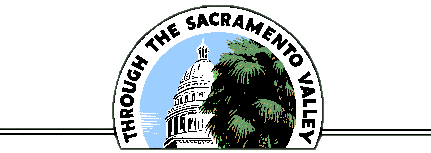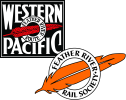THE GREAT LISBON TRESTLE COLLAPSE OF 1951
Tuesday, July 24, 1951, began like any other day for engineer David D. Corsair as he checked over Sacramento Northern GE steeple cab motor 650 at Sacramento. With him that day were brakemen John J. Dozier and W. W. Sharf, under the direction of conductor Harry C. Minium. Their train, SN X650, was 21 cars of steel bound for the U.S. Steel rolling mill at Pittsburg, California. Western Pacific Caboose 739 brought up the rear of the train.
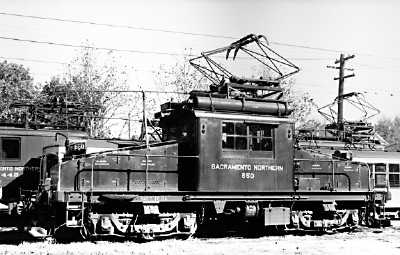
The train rolled south through Westgate Yard in West Sacramento just after lunchtime and onto the old OA&E track stretching through the sparsely populated delta country. The run would cover about 45 miles to Chipps where the cars would be shuttled across Suisun Bay aboard the car ferry Ramon . It would take the ferry at least three trips to carry all the cars across the channel. The motor and caboose would also cross the bay, and with the train reassembled, head up to Pittsburg to deliver their steel before returning with a train of empties.
Shortly after 2 p.m., only just seven miles from West Sacramento, the train pulled onto the Lisbon Trestle (sometimes known as the Arcade Trestle), the longest on the SN. This structure stretched for almost four miles across the Yolo Bypass, carrying SN trains nearly 20 feet above the marshy ground. Speed across the trestle was restricted to just 10 miles per hour, and Corsair carefully slowed his train before rolling onto the structure.
At 2:34 the motor was nearly half way across the trestle when all Hell broke loose. SN 650 suddenly pitched downward, falling almost 20 feet. Behind the motor, nearly 4,000 feet of the trestle collapsed like a row of giant dominoes.
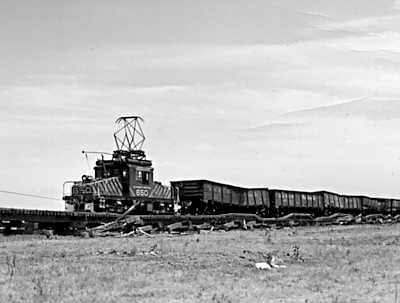
Corsair, and some of the other crewmen were thrown violently from the train. He and Minium both suffered broken backs. Minium's thigh was also fractured. Sharf and Dozier also had serious back injuries. The crew was fortunate that members of the railroad's B&B crew were on hand inspecting the footings of the trestle when the accident happened. They rushed to the aid of the injured men. The crewmen were taken to Sutter Hospital in Sacramento. None of their injuries were life threatening, however all four men were unable to work again and were later retired because of their disabilities.
Railroad officials immediately announced an investigation. S. S. Long, the SN Superintendent, speculated that flooding in the slough during the previous winter might have shifted some of the trestle's concrete footings. The railroad confidently predicted the trestle would be back in service in two months. Repairs actually took almost three years.
Arrangements were made with the Western Pacific reroute the steel and other traffic over their line between Sacramento and Stockton. The WP was able to negotiate temporary trackage rights over the Santa Fe from Stockton to Pittsburg. The trains used WP diesels with SN crews, initially under the direction Santa Fe pilot engineers and conductors. The arrangement later became permanent, and continued under UP ownership until 1996 when steel shipments were shifted over to ex-SP trackage.

Among the SN's immediate challenges was retreiving motor 650 and the cars. First the steel had to be unloaded with a portable crane onto highway trucks. Next a ramp was built from the the trestle's undamaged south end down to the level of the collapsed section. Immediate repairs were made to the flattened track, and the equipment was pulled out slowly over the damaged sections and returned to the WP shops in Sacramento for repairs or scrapping.
SN 650 suffered serious damage to her traction motors in the fall. When repaired, the locomotive was downgraded to 600 volts. The motor was no longer able to work south of Sacramento, which was mostly 1500-volt territory. It was used for switching around Sacramento until the wires came down there in November 1953. Next it replaced flat motor 405 at Oroville. When the wire came down at Oroville in April 1954, SN 650 moved to the Yuba City-Marysville section until retired in 1957.
It is not known how many of the gondolas were returned to service. Many belonged to the Denver & Rio Grande Western. From the photos, it appears that some were badly twisted and were probably scrapped, though whether this took place at Sacramento or if the cars were returned first to the D&RGW, isn't known at this point. Caboose 739 was deemed beyond repair by the WP and was scrapped at Sacramento. This class of cabooses were scheduled for replacement in just a few years, and any in need of serious repairs were simply retired.
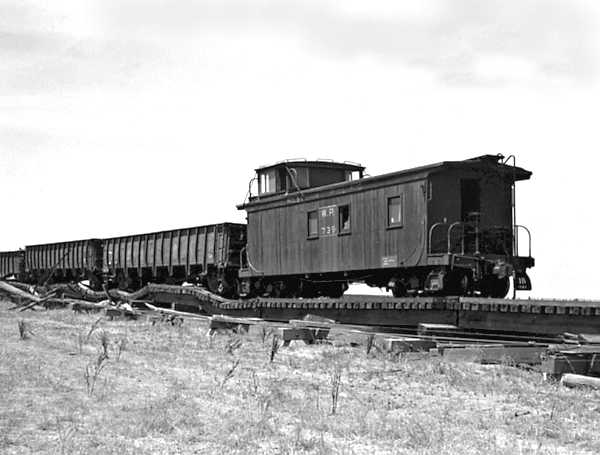
The trestle collapse had two major effects on the SN. Although the first change didn't happen right away, the accident was the handwriting on the wall that condemned car ferry Ramon. For several years the WP management had chewed their collective fingernails in fear that the ferry would collide with another vessel or capsize in mid-channel. The heavy steel shipments were particularly worrying, as the boat was unstable when heavily loaded. Additionally, the ferry was a traffic bottleneck and was very expensive to operate. For the time being, Ramon was the only practical way to reach the now-isolated track south of the Lisbon Trestle from the south. There was a connection with the Southern Pacific at Canon on the Fairfield-Willota Branch, which might have handled some traffic from Sacramento, but with traffic for Oakland now moving over the ATSF, the ferry would no longer be needed once the trestle was repaired.
The Lisbon Trestle actually was not returned to service until April 6, 1954, almost three years after the accident. The opening was timed to coincide with Ramon's annual inspection the following day. The marine engineers found major structural problems that would cost much more to repair than the boat was worth. The SN management had no second thoughts about retiring the ferry, and it never saw service again. Ramon was sold for scrap a few months later and broken up at Antioch.
The second effect was that the trestle collapse downgraded all track between West Sacramento and Chipps to branch lines, which suited the management just fine. SN taffic south of Sacramento was spiraling downward, and downgrading the mainline through an area with few industries saved the railroad a lot of money. The also SN decided not to replace the overhead wire on the trestle. In fact, all track north of Arcade, and all track south of the break as far as Dutton was dieselized on July 1, 1953.
The collapse of SN's Lisbon Trestle was more than just a curious accident. The disaster punched the first hole in the road's mainline. This was a portent of things to come. In just a few years the SN would have far more holes than track.
Special thanks to Robert A. Burrowes for the use of his photos, and to Bob Campbell for his help with this story. The major facts were drawn from the July 25, 1951, editions of the SACRAMENTO BEE and SACRAMENTO UNION newspapers.
For more about the SN's steel trains, visit our feature
U.S. STEEL AND THE "SN DETOUR".
